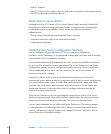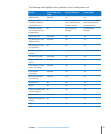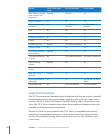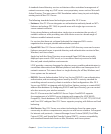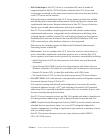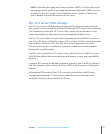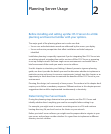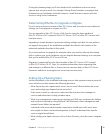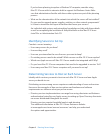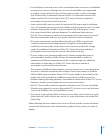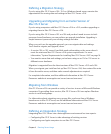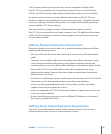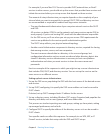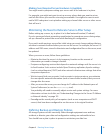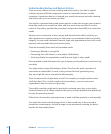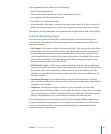
If you’ve been planning to replace a Windows NT computer, consider using
Mac OS X Server with its extensive built-in support for Windows clients. Make
sure that administrators familiar with these other systems are part of the planning
process.
What are the characteristics of the network into which the server will be installed? Â
Do you need to upgrade power supplies, switches, or other network components?
Is it time to streamline the layout of facilities that house your servers?
An individual with systems and networking knowledge can help with these details
as well as completing the Installation & Setup Worksheet on the Mac OS X Server
Install Disc or Administration Tools CD.
Identifying Servers to Set Up
Conduct a server inventory:
How many servers do you have? Â
How are they used? Â
How can you streamline the use of servers you want to keep? Â
Do existing servers need to be retired? Which servers can Mac OS X Server replace? Â
Which non-Apple servers will Mac OS X Server need to be integrated with? Why? Â
Do you have Mac OS X Server computers that need to be upgraded to version 10.6? Â
How many new Mac OS X Server computers will you need to set up? Â
Determining Services to Host on Each Server
Identify which services you want to host on each Mac OS X Server and non-Apple
server you decide to use.
Distributing services among servers requires an understanding of users and services.
Here are a few examples of how service options and hardware and software
requirements can inuence what you put on servers:
Directory services implementations can range from using directories and Kerberos Â
authentication hosted by non-Apple servers to setting up Open Directory directories
on servers distributed throughout the world.
Directory services require thoughtful analysis and planning.
The additional information at Mac OS X Server Resources website
at www.apple.com/server/macosx/resources/ can help you understand
the options and opportunities.
26 Chapter 2 Planning Server Usage



